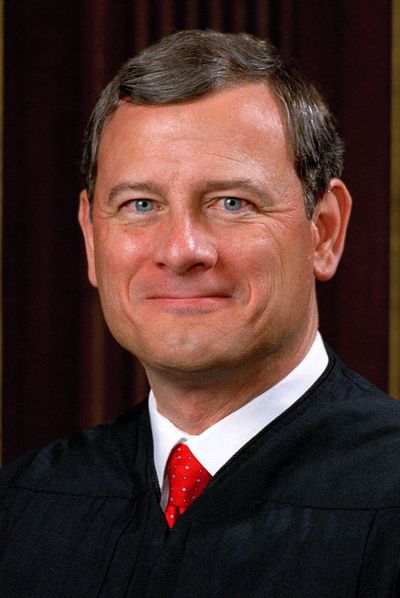We the People: The chief justice of the U.S. Supreme Court is the ‘first among equals.’ With Roe overturned, how will Roberts be remembered?

Each week, The Spokesman-Review examines one question from the Naturalization Test immigrants must pass to become United States citizens.
Today’s question: Who is the chief justice of the United States now?
The chief justice has been described as “the first among equals” on the Supreme Court, and that may have been no more evident than in Chief Justice John G. Roberts’ opinion in Friday’s ruling on abortion.
Described by many as an incrementalist in his approach to the law, Roberts, 67, asked for his colleagues to take “a more measured course” in determining whether to uphold a Mississippi law banning abortions after 15 weeks than overturning the court’s nearly 50-year precedent.
“Surely we should adhere closely to principles of judicial restraint here, where the broader path the Court chooses entails repudiating a constitutional right we have not only previously recognized, but expressly reaffirmed …” Roberts wrote in an opinion he could convince none of his colleagues to sign. If he’d done so, Roe would still be the law of the land because of the three dissenting justices.
Such an approach typifies Roberts’ approach to the law, said Richard Seamon, a professor at the University of Idaho’s College of Law.
“If he moves the law, he wants to do it in baby steps,” Seamon said.
That’s not to say his rulings have not been momentous. Since his appointment to the bench by President George W. Bush in 2005, Roberts has authored several significant opinions, among them the narrow decision upholding the Affordable Care Act on the basis that its individual mandate requiring people to seek health care was within Congress’ taxation powers.
He also wrote the opinion in a landmark 2018 decision that prohibited police from searching smartphone data without a warrant.
The chief justice is not afforded any particular duties, powers or responsibilities in the Constitution, beyond its mention that the chief justice must preside over impeachment trials of the president.
Roberts presided over the first impeachment trial of President Donald Trump. He could have been the first chief justice to preside over two such trials, but he declined during Trump’s second impeachment trial in February 2021 because Trump was no longer the president.
Roberts has tried in his time on the bench to preserve the court’s perception as being above the political fray of the times, said Dan Morrissey, a professor and former dean of Gonzaga’s School of Law. In response to a charge from Trump that a federal judge who opposed his asylum policy was biased as “an Obama judge,” Roberts asserted in 2018 that judges operated independently of the president who appointed them.
“We do not have Obama judges or Trump judges, Bush judges or Clinton judges,” Roberts told the Associated Press at the time. “What we have is an extraordinary group of dedicated judges doing their level best to do equal right to those appearing before them.”
That can be seen in his attempt in the decision last week to try to persuade one of his colleagues to uphold the legal precedent, Morrissey said, which it appears Roberts was unable to do.
“I think that’s a blow to his leadership,” Morrissey said.
Seamon agreed.
“He only convinced himself,” Seamon said.
The abortion decision demonstrates that the power of the court lies in its majority, not in the wishes or legal perspective of any one justice, even the chief, said Shaakirrah Sanders, professor at the University of Idaho College of Law.
“Regardless of what the chief justice thinks,” she said, “the court has set its own course. “That is what every Supreme Court has done in the past.”